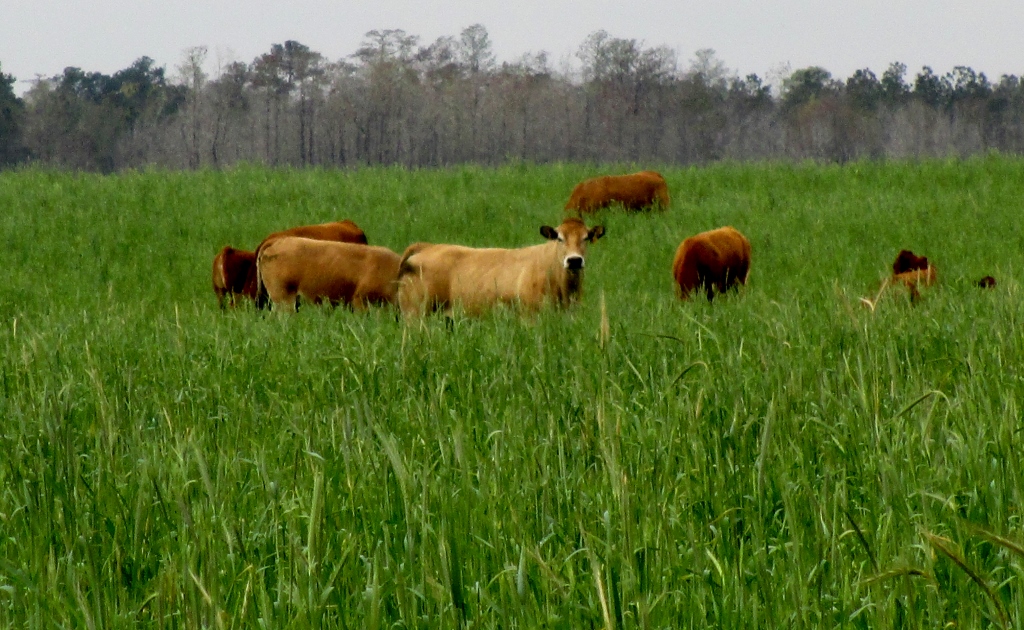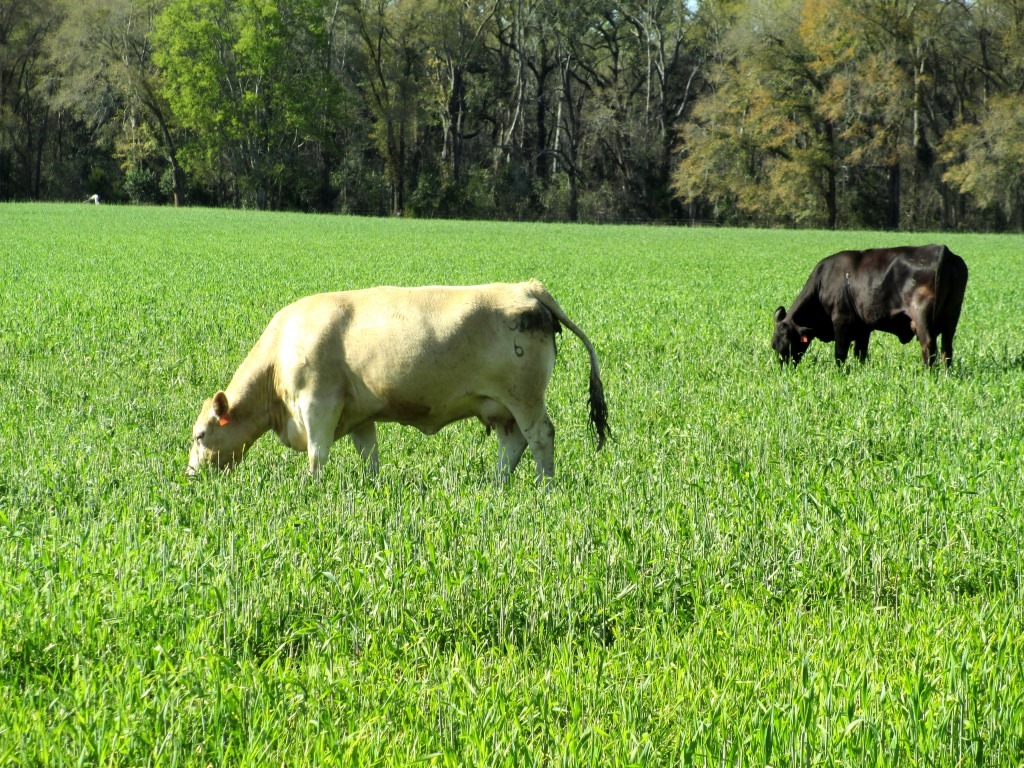Grass tetany is a potentially deadly condition in cattle and sheep grazing on small grains or ryegrass. Grass tetany is a condition associated with reduced magnesium levels in the blood, and can be a serious problem for cattle and sheep producers in Northwest Florida. Cool season forages can be low in magnesium. Lactating cows and ewes grazing on the early growth of cool season forages have the greatest risk because of their increased nutritional requirement for magnesium. In acute cases, mortality occurs rapidly. Symptoms are rarely noticed in time and cattle are simply found dead in the pasture. For this reason preventing grass tetany is much more practical than treating it.
The most efficient way to prevent grass tetany is to feed a mineral supplement that contains adequate magnesium. When conditions are favorable for grass tetany to occur, a mineral supplement with 10-15% magnesium should be made available to cattle. Additionally, it is important to make sure that cattle are consuming an adequate amount of the supplement daily. Depending on the percent magnesium, cattle need to be consuming 6-12oz/head/day of the supplement. Mineral consumption rates tend to go down during the winter months so over-consumption generally is not an issue. Considering this, many steps that are often taken during the summer months to prevent over-consumption (diluting supplement with salt, positioning supplement away from water source, etc.) are not necessary during the winter.
As previously mentioned, grass tetany is generally associated with the first lush growth of cool season forages. Conditions this year may be favorable for grass tetany. Across the Panhandle winter grazing has gotten off to a slow start. If conditions become favorable and these pastures experience a period of rapid growth, the potential for grass tetany could increase. This situation could be further compounded by producers that have tried to push their grazing along with extra fertilizer. High levels of nitrogen and potassium can interfere with the magnesium uptake from the soil, further increasing the likelihood of grass tetany.
Weather conditions this summer made quality hay production very difficult. The majority of the hay produced in the Panhandle this past summer was very poor quality. Considering this, be sure that poor quality hay is supplemented as needed to meet the nutritional needs of the cattle consuming it. Protein and energy supplements are important, along with adequate mineral supplementation. Not only are mineral feeds critical for preventing conditions like grass tetany, but also to ensure the overall performance of the herd.
For additional information on grass tetany, mineral supplementation, or other cattle and forage related issues, use the links to the following publications, or contact your local County Extension Agent.
Grass Tetany in Cattle
Mineral Concentrations in Grazed Cool-Season Annual Grass Pastures in North Florida
- Panhandle Corn & Soybean Update – February 7 - January 17, 2025
- 2025 Florida Bull Test Sale EPD Cheat Sheets - January 10, 2025
- Fall is Here – It’s Time to Spray Cogongrass - October 11, 2024


